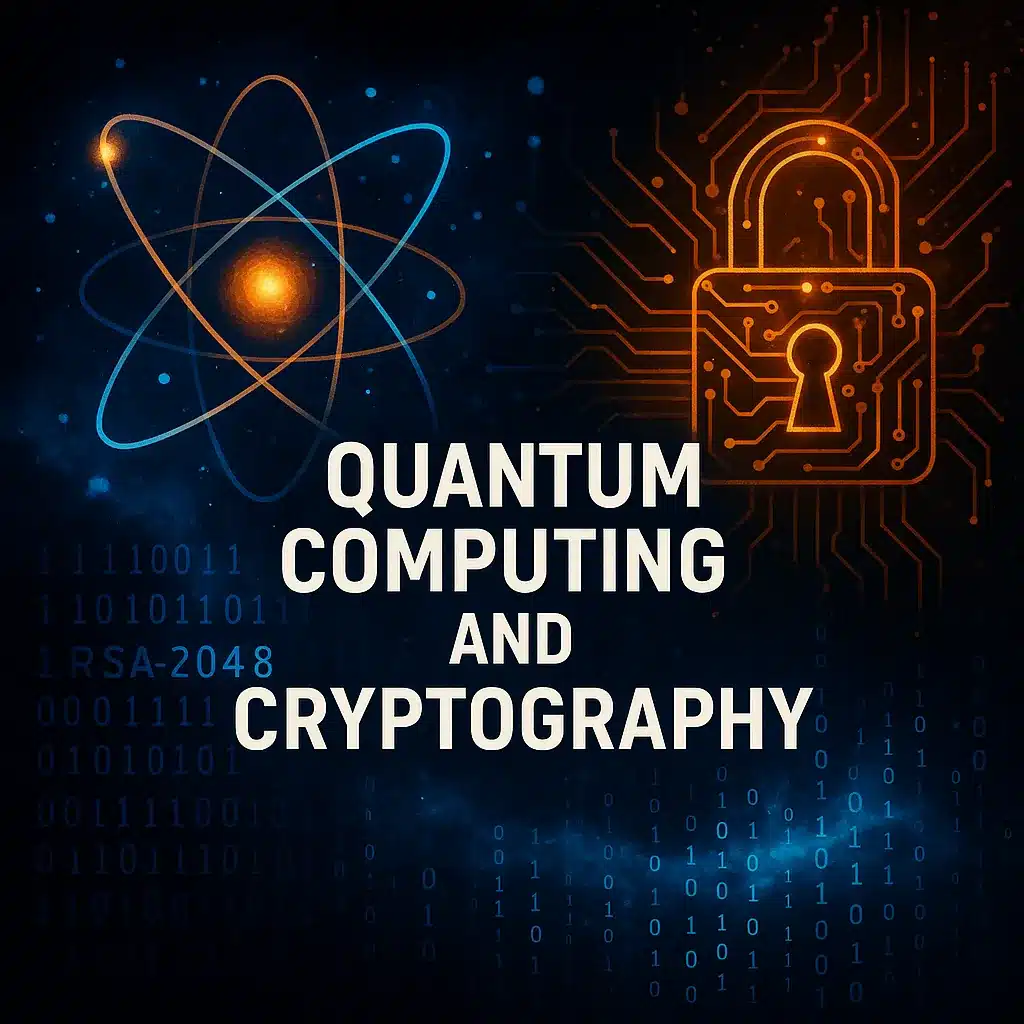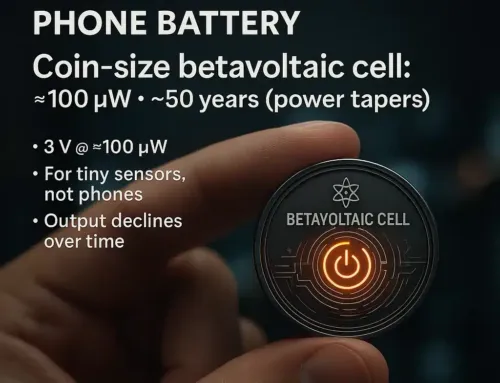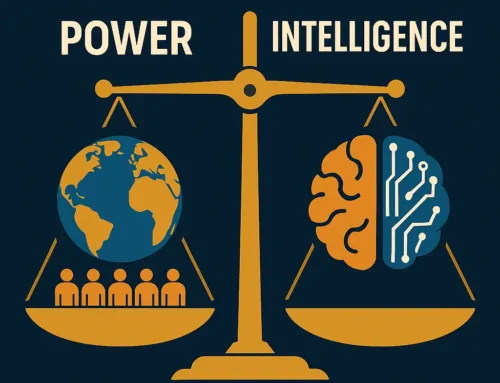
Approx. read time: 14.6 min.
Post: Quantum Computing vs Cryptography: 7 Critical Risks & Solutions Every Engineer Must Know
Introduction
Quantum computing and cryptography is a rapidly evolving field that promises to revolutionize the way we process information, solve complex problems, and secure data. For engineers and cybersecurity professionals, the implications of quantum computing and cryptography extend deeply into the realm of cryptography, the backbone of secure communications in the digital age. With its ability to perform certain calculations exponentially faster than classical computers, quantum computing and cryptography poses unique challenges and threats to traditional cryptographic systems that rely on mathematical complexity for their security.
This article delves into the intersection of quantum computing and cryptography, illuminating the potential threats to established standards like RSA-2048 and symmetric key algorithms, while also exploring the advancements in post-quantum cryptography (PQC). We will review the latest developments from the National Institute of Standards and Technology (NIST) regarding quantum computing and cryptography, examine the National Security Agency (NSA) guidelines, and assess the readiness of current cryptographic systems in the face of quantum advancements. Additionally, we will discuss innovative solutions such as Quantum Key Distribution (QKD) and their feasibility in real-world applications.
Understanding the relationship between quantum computing and cryptography is fundamental as we navigate this technological evolution.
Qubit Counts for RSA-2048 Cracking
Required Qubit Estimates
To assess the vulnerability of RSA-2048, it’s crucial to estimate the number of qubits required for a quantum computer to effectively crack this encryption standard. The general consensus among researchers indicates that Shor’s algorithm, which harnesses quantum computing and cryptography’s parallel processing capabilities, could theoretically factor large integers exponentially faster than classical algorithms. For RSA-2048, estimates suggest that around 4,000 logical qubits would be necessary to achieve successful decryption, considering error correction systems that account for qubit instability.
However, this figure can be misleading without context. The actual number of physical qubits required could be significantly higher due to qubit error rates and the need for error correction. Current quantum hardware, with its limitations in coherence times and gate fidelities, raises the question of when quantum computers will reach the scale necessary to pose a genuine threat to quantum computing and cryptography and similar public-key cryptosystems.
Factors Influencing Qubit Efficiency
Several factors impact the efficiency of qubits when applied to cryptographic systems. First, the architecture of the quantum computer itself plays a pivotal role in determining how effectively it can harness qubits for quantum computing and cryptography. Gate designs, connectivity between qubits, and overall qubit quality directly influence the computational power available for executing Shor’s algorithm.
Additionally, advancements in quantum error correction techniques are necessary to enhance qubit reliability. As researchers continue to develop new methods for stabilizing qubits and reducing error rates, the threshold at which quantum computers can break RSA encryption will shift, making it essential for engineers to stay updated on technological progress and be proactive in transitioning to quantum computing and cryptography algorithms that are resistant to quantum attacks.
Shor’s Algorithm vs Grover’s Algorithm
Shor’s Algorithm and RSA-2048
Shor’s algorithm is one of the most significant quantum algorithms, specifically designed for integer factorization. Its ability to factor large numbers with polynomial time complexity poses a direct threat to RSA encryption systems. By utilizing quantum computing and cryptography parallelism, Shor’s algorithm can effectively find the prime factors of a composite number, enabling the decryption of RSA-encrypted messages.
For engineers, the implications of Shor’s algorithm and quantum computing and cryptography are profound. As quantum hardware continues to evolve, understanding the mechanics of Shor’s algorithm is vital for anticipating the risks associated with current cryptographic standards. Organizations must begin assessing their reliance on RSA and prepare migration strategies to post-quantum cryptography solutions.
Grover’s Algorithm Impact on Symmetric Keys
While Shor’s algorithm primarily threatens asymmetric algorithms like RSA, Grover’s algorithm poses a significant risk to symmetric key algorithms. Grover’s algorithm enables a quantum computer to search through an unsorted database with quadratic speedup, effectively halving the effective key length of symmetric cryptographic systems. For instance, a 256-bit key, which is currently considered secure against classical brute-force attacks, would only offer the security equivalent to a 128-bit key when faced with a quantum adversary in the context of quantum computing and cryptography.
This realization compels engineers to reconsider the lengths of symmetric keys in light of potential quantum threats. As quantum computing technology advances, updating key lengths and exploring new symmetric algorithms that are resistant to quantum attacks will be critical components of future-proofing cryptographic systems.
NIST PQC Standards Review
The National Institute of Standards and Technology (NIST) has been at the forefront of developing post-quantum cryptographic standards, aiming to create algorithms that can withstand quantum attacks. The NIST PQC project began in 2016, inviting researchers from around the globe to submit their cryptographic proposals related to quantum computing and cryptography. The evaluation process is rigorous and includes multiple rounds of analysis to ensure the selected algorithms meet stringent security and performance criteria.
The National Institute of Standards and Technology (NIST) has been at the forefront of developing post-quantum cryptographic standards, aiming to create algorithms that can withstand quantum attacks. The NIST PQC project began in 2016, inviting researchers from around the globe to submit their cryptographic proposals. The evaluation process is rigorous and includes multiple rounds of analysis to ensure the selected algorithms meet stringent security and performance criteria.
As of 2023, NIST has identified several finalists and alternate candidates for standardization. This initiative is crucial, as organizations across various sectors must adopt these new standards to safeguard their data against the inevitable rise of quantum computing and cryptography capabilities.
Key Candidates: Kyber and Dilithium
Among the leading candidates in the NIST PQC process, Kyber and Dilithium have emerged as strong contenders. Kyber is a key encapsulation mechanism based on lattice-based cryptography, which is considered resistant to quantum attacks. It offers a favorable balance of security and performance, making it suitable for a variety of applications, including secure communications and digital signatures.
On the other hand, Dilithium focuses on digital signatures, leveraging similar lattice-based technology to provide robust security against quantum threats. Both algorithms have undergone extensive testing and are positioned to replace existing standards like RSA and ECDSA in various applications, including TLS and VPNs. As engineers, understanding quantum computing and cryptography candidates and their potential implementations is crucial for preemptively addressing the challenges posed by quantum computing and cryptography.
NSA CNSA 2.0 Deadlines
Overview of CNSA Framework
The National Security Agency (NSA) has outlined its Commercial National Security Algorithm (CNSA) suite, which provides guidelines on cryptographic algorithms deemed secure for national security systems. The CNSA suite is being updated to include post-quantum cryptographic algorithms in anticipation of future quantum threats. The NSA has established a timeline for transitioning to these new standards, which further emphasizes the urgency for organizations to adapt.
The CNSA framework aims to ensure that U.S. government and defense systems remain secure against emerging technologies, including quantum computing and cryptography. By adhering to these guidelines, engineers and developers can make informed decisions about the cryptographic algorithms they deploy, ensuring compliance and security in their systems.
Implications of Deadlines for Engineers
The NSA’s deadlines for transitioning to post-quantum cryptographic standards underscore the urgency for engineers to act. Organizations must evaluate their current cryptographic implementations and devise strategies for migrating to NIST-approved algorithms related to quantum computing and cryptography, ensuring they meet CNSA requirements. This transition period presents both challenges and opportunities for engineers, as it entails re-evaluating existing systems and potentially redesigning infrastructures to accommodate new cryptographic protocols.
Failing to meet these deadlines could leave organizations vulnerable to quantum attacks, jeopardizing sensitive data and communications. Thus, proactive planning and execution are essential as the engineering community adapts to the changing landscape of cryptography.
Testing Hybrid TLS Key Exchange
Overview of Hybrid TLS
With the rise of quantum threats, the hybrid TLS key exchange mechanism has gained traction. This approach combines classical and quantum-resistant algorithms to establish secure communications. By using both conventional key exchange methods (like ECDHE) alongside a post-quantum key exchange algorithm (such as Kyber), organizations can create layers of security that mitigate the risks posed by quantum computing and cryptography.
The implementation of hybrid TLS is crucial for organizations that require immediate solutions to protect their data against potential quantum attacks. As part of a comprehensive cybersecurity strategy, hybrid TLS serves as a bridge during the transition to fully post-quantum cryptographic systems.
HNDL Threat Assessment
As hybrid TLS becomes more prevalent, assessing the risks associated with its implementation is essential. The Hybrid Network Decryption Layer (HNDL) is one area of concern, as it can potentially serve as a target for attackers seeking to exploit weaknesses in the hybrid system. Engineers must conduct thorough threat assessments and pen tests to identify vulnerabilities within their hybrid TLS configurations, ensuring robust defenses are in place.
Properly configuring hybrid TLS will not only safeguard against quantum threats but also enhance the overall security posture of the organization. Regular reviews, updates, and training for developers and engineers are necessary to maintain the integrity of hybrid systems in an evolving threat landscape.
Benchmarking PQC on MCUs
Performance Metrics for PQC
As organizations begin to implement post-quantum cryptographic algorithms, benchmarking their performance on microcontroller units (MCUs) is vital. MCUs are widely used in embedded systems, IoT devices, and other resource-constrained environments. The performance metrics of PQC algorithms, such as execution time, memory usage, and energy consumption, must be understood to ensure they can be integrated effectively into these systems.
Performance benchmarking involves rigorous testing under various operational conditions to ascertain the practicality of deploying PQC. Engineers must evaluate the trade-offs between security and performance to determine which algorithms can be feasibly adopted within their specific applications.
In addition to performance metrics, side-channel attacks pose a significant risk to the integrity of cryptographic implementations, including PQC algorithms. These attacks exploit information leaked during the execution of algorithms, such as timing data, power consumption, and electromagnetic emissions. Engineers must conduct comprehensive side-channel risk assessments as they implement quantum computing and cryptography to ensure that sensitive data remains protected against potential exploits.
In addition to performance metrics, side-channel attacks pose a significant risk to the integrity of cryptographic implementations, including PQC algorithms. These attacks exploit information leaked during the execution of algorithms, such as timing data, power consumption, and electromagnetic emissions. Engineers must conduct comprehensive side-channel risk assessments as they implement PQC to ensure that sensitive data remains protected against potential exploits.
To mitigate these risks, adopting countermeasures such as constant-time algorithms, noise generation, and physical shielding can help protect against side-channel attacks. Engineers must remain vigilant and proactive in addressing these vulnerabilities as they transition to post-quantum cryptographic systems.
As the threat landscape evolves with the advent of quantum computing and cryptography, building crypto-agile frameworks within organizations is of utmost importance. Crypto-agility allows organizations to quickly adapt to new cryptographic standards and technologies as they become available, ensuring that systems remain secure against emerging threats.
Importance of Crypto-Agility
As the threat landscape evolves with the advent of quantum computing, building crypto-agile frameworks within organizations is of utmost importance. Crypto-agility allows organizations to quickly adapt to new cryptographic standards and technologies as they become available, ensuring that systems remain secure against emerging threats.
This approach necessitates developing a robust infrastructure that supports seamless updates and changes to cryptographic algorithms. By adopting modular designs and employing secure key management practices, organizations can enhance their adaptability in the face of changing cryptographic requirements.
Updating PKI and Secure Boot Mechanisms
Updating Public Key Infrastructure (PKI) and secure boot mechanisms is an essential aspect of building a crypto-agile framework. As organizations transition to post-quantum cryptographic standards, updating their PKI to support new algorithms will ensure secure key management and authentication processes remain intact in the context of quantum computing and cryptography.
Similarly, secure boot mechanisms must evolve to accommodate the new cryptographic standards, ensuring that devices boot securely and resist unauthorized access. Engineers play a critical role in implementing these updates, ensuring a smooth transition to a more secure future.
Comparing Quantum Key Distribution (QKD)
QKD Mechanisms Overview
Quantum Key Distribution (QKD) is an emerging technology that leverages the principles of quantum mechanics to establish secure communication channels. Unlike traditional key exchange methods, quantum computing and cryptography ensures that any eavesdropping attempt is detectable, as the act of observing quantum states alters their properties.
There are several QKD protocols, including BB84, E91, and others, each offering unique advantages and challenges. QKD’s promise lies in its theoretical security, but practical implementation remains a significant hurdle, particularly in terms of distance limitations and the complexity of integrating QKD with existing communication infrastructure.
Challenges and Limitations of QKD
Despite its potential, QKD faces several challenges that hinder its widespread adoption. One of the primary limitations is distance. QKD protocols typically operate effectively over short distances, necessitating the use of relay stations or trusted nodes for long-range communications, which can introduce potential vulnerabilities.
Moreover, the integration of QKD into existing communication systems poses practical challenges. Engineers must navigate the complexities of incorporating QKD into legacy systems, requiring significant investment in new hardware and protocols. Addressing these challenges will be crucial for the broader acceptance and deployment of quantum computing and cryptography as a viable solution for secure quantum communication.
Tracking Blockchain Quantum Plans
Current Developments in Blockchain
The intersection of blockchain technology and quantum computing and cryptography is a rapidly evolving area of research. Blockchain’s security relies on cryptographic techniques that could be undermined by quantum computers. As a result, researchers and industry leaders are investigating quantum-resistant blockchain algorithms to safeguard decentralized networks from future threats.
Current developments include exploring lattice-based, hash-based, and multivariate polynomial cryptography to enhance blockchain security against quantum attacks. These advancements are critical as blockchain technology continues to gain traction across various sectors, including finance, supply chain, and healthcare.
Enterprise Readiness Surveys
To gauge the preparedness of enterprises for quantum threats, organizations are conducting readiness surveys. These surveys aim to assess the understanding of quantum computing and cryptography risks, the current state of cryptographic implementations, and the strategic plans for transitioning to quantum-resistant solutions.
By collecting and analyzing data from these surveys, stakeholders can identify gaps in knowledge and preparedness, enabling them to develop targeted strategies for enhancing resilience against quantum threats. Engineers and cybersecurity experts must actively participate in these initiatives to ensure their organizations are adequately prepared for the quantum future.
Conclusion
Key Takeaways for Engineers
As quantum computing continues to advance, engineers must remain vigilant in addressing its implications for cryptography. Understanding the mechanics of quantum algorithms, staying updated on NIST PQC developments, and preparing for the transition to post-quantum standards are critical for maintaining secure systems. Hybrid approaches, such as hybrid TLS, and the integration of QKD provide valuable strategies for mitigating threats while organizations adapt to the evolving landscape.
Future Directions in Quantum Cryptography
The future of quantum cryptography will likely involve continued innovation and collaboration across the engineering and research communities. As new cryptographic algorithms are standardized and quantum technologies evolve, staying informed and proactive will be essential for ensuring data security in a post-quantum world. By embracing crypto-agility and adopting forward-thinking strategies, engineers can help shape the future of secure communications amid the quantum revolution.
As the realm of quantum computing and cryptography continues to develop, it is crucial for engineers to remain adaptable and informed.
FAQs
What is quantum computing?
Quantum computing is a type of computation that utilizes the principles of quantum mechanics to process information. Unlike classical computers, which use bits as the smallest unit of data (0 or 1), quantum computers use qubits, which can exist in multiple states simultaneously, enabling them to perform complex calculations at unprecedented speeds.
How does Shor’s algorithm threaten current cryptography?
Shor’s algorithm can efficiently factor large integers, which directly threatens public-key cryptographic systems like RSA. If a sufficiently powerful quantum computer runs Shor’s algorithm, it could decrypt secure communications that rely on RSA, compromising sensitive data.
What are post-quantum cryptography (PQC) algorithms?
Post-quantum cryptography (PQC) algorithms are cryptographic systems designed to be secure against potential quantum attacks. These algorithms are being evaluated and standardized by organizations like NIST to replace traditional public-key systems like RSA and ECC that could be vulnerable in a quantum computing era.
Why is crypto-agility important?
Crypto-agility refers to the ability of an organization to quickly adapt its cryptographic systems to new algorithms or standards as they emerge. In the context of quantum threats, being crypto-agile allows organizations to implement quantum-resistant algorithms swiftly, ensuring ongoing data security.
What role does Quantum Key Distribution (QKD) play in secure communications?
Quantum Key Distribution (QKD) uses the principles of quantum mechanics to securely share encryption keys between parties. It offers the potential for theoretically secure communications by detecting any eavesdropping attempts, making it a promising solution for securing data against future quantum attacks.
Related Videos:
Related Posts:
Breaking Addiction to Negative Life Fixes: How to Face Your Demons Without Numbing Out
Child-Parent Perspective Conflict: Understanding and Resolving the Generational Divide
Coping with Childhood Trauma: 10 Proven Strategies for Healing and Growth
AI in Diabetes Treatment and Prevention
10 Revolutionary Breakthroughs Powering a Transformation in Cancer Care









